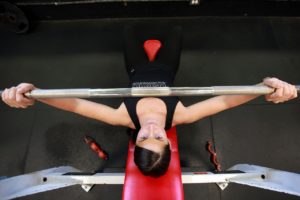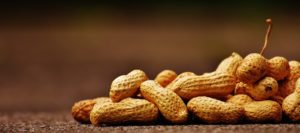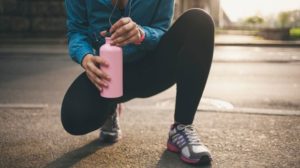10 tips to boost your metabolism
Rev it up!
Ask anyone watching their weight and they tell you they need to boost their metabolism.
But, how fast your body burns calories depends on a number of things.
Some are born lucky:
- They may have a naturally fast metabolism
- Men – they burn fat faster than women
For most of us, it slows after 40
The good news is that even though you can’t change your age, gender or genetics, you can improve your metabolism.
10 tips to boost your metabolism:
1 Build muscle

We’ve all heard muscle weighs more than fat, well it also burns more fat!
For each 1 kilo of fat your body burns about 12 calories a day just to sustain itself
Fat on the other hand burns just 4 calories daily
Doesn’t sound like much, but take for example a 70kg person who has about 25kg fat. That fat burns about 100 calories daily
If that person could convert 5kg of that fat to muscle:
20kg fat burns 80cal
5kg fat burns 60cal
Total 140cal daily
I know it doesn’t sound like much, but remember, that’s while you’re not moving
2 Move faster
You knew it was coming – cardio exercise (running, swimming, aerobics) doesn’t build much muscle but it does rev up the metabolism. High intensity exercise results in a bigger and longer rise in your resting metabolic rate (the one we talked about above)
3 Fuel with water
The body needs water to process calories and even mild dehydration can slow your metabolism.
Try having a glass of water before each meal or snack and add a glass or two in between as well.
Avoid salty foods and boost your vegetable intake – most veggies are full of water
4 Energy drinks?
Some energy drinks contain caffeine and taurine which can boost your metabolism. But be careful – they tend to be high in sugar and can result in raised blood pressure and sleep issues.
My advice – steer clear
5 Snack smart
Have you heard of the starvation effect? If you cut your calories too drastically over a long period of time, your body can start holding onto fat stores. Rather have 3 decent meals a day or split those three meals into 5 or 6 smaller meals (note: split the meals, don’t add extra snacks as this just increases your calorie intake)
6 Spice it up
Chillis and spicy foods have natural chemicals that can kick your metabolism up a gear. It’s a small temporary effect, but eaten regularly benefits can add up. Simply add chilli flakes to pasta, soups, casserols.
7 Protein power
We burn more calories when digesting protein than fat or carbohydrates so think caveman and make sure you have enough protein in your diet.
Good sources of protein:
- Lean beef
- Turkey
- Fish

- Nuts
- Beans
- Eggs
- Dairy
8 Coffee
Ah, I love this one! Taken in moderation coffee give you a short term metabolic boost (it can also increase your endurance while you exercise). But do be careful and stick to 1 or 2 cups a day
9 Green Tea
I start my day with a cup of green tea. It also contains caffeine and catechins which can help rev up your metabolism for a few hours. Research suggests drinking 2 – 4 cups daily can help you burn 17% more calories during moderately intense exercise. I’ll take that!
10 Don’t crash (and b
urn)
Crash diets (when you eat less than 1200 calories a day for women or 1800 for men) may kick start your initial weight loss but in the long term they can result in muscle loss – refer back to my first point about muscle vs fat. Enough said.
Eat properly
Eat moderately
Eat unprocessed
A bit more detail:
Resting metabolism is the rate at which your body burns energy (ie calories) at rest; or, how much energy your body requires to carry out everyday activities. It should be responsible for the largest amount of calories that you burn each day.
Afterburn happens after a workout and results in a dramatic increase in your resting metabolic rate. It’s effectiveness will depend on the type of workout and its intensity that you have done.
Your metabolism increases a lot during any workout, because you are using a lot of energy (or you should be).
If you are training for fat loss, you will need to consider the value of different workouts by how quickly your metabolic rate to return to normal after your workout. In other words, how long your ‘afterburn’ lasts. It can take around 30 minutes for long aerobic training (e.g., using a piece of ca
rdio equipment at a steady speed) or (according to studies in Alwyn Cosgrove’s The Hierarchy of Fat Loss) in excess of 30 hours after high intensity resistance training.
During resistance training (using weights – either body weight or lifting weights), your muscle fibres tear and then repair over the next 24 to 48 hours. This is part of the process of building stronger muscles and it requires your body to burn more energy for a longer period of time.
Given this it’s fair to say that high intensity, circuit-type, resistance training that includes a squat, lunge, bend, upper body push and pull exercises will be most effective for fat loss (because they work the whole body as well as getting your heart rate pumping).
Join us for fun, effective, metabolism boosting outdoor classes: www.goforfit.com.au to get a FREE class pass


